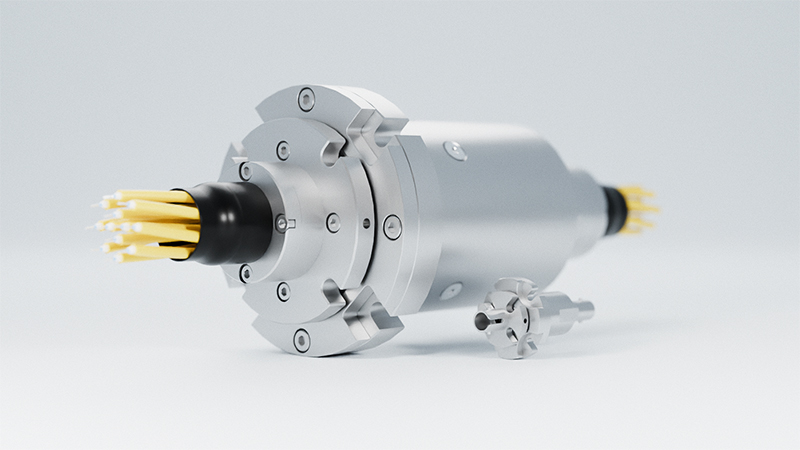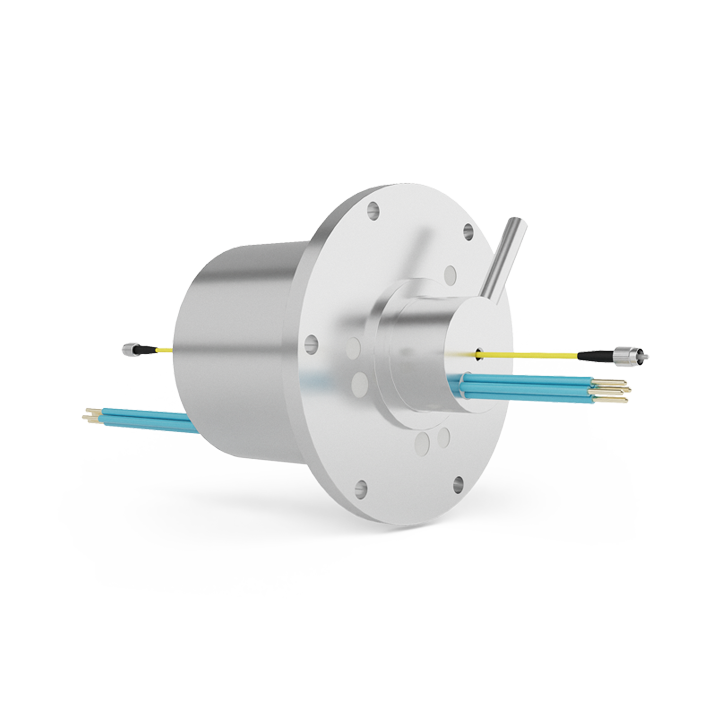
Effective & Reliable Rotating Transmission of Optical Signals
At Penlink, we offer a comprehensive range of fiber optical rotary joints tailored to meet your specific requirements. Whether you need single-mode or multi-mode fibers, simplex or duplex configurations, we have the expertise and products to support your application.
Our fiber-optic solutions are highly customizable, ensuring that you get the perfect fit for your needs.
We understand that every application is unique, and we are committed to providing solutions that enhance performance and reliability.
Discover how Penlink’s fiber-optic solutions can transform your application. Contact us today to learn more and find the perfect solution for your needs.
Relevant Documents

Looking for Winch Slip Rings for Fiber & Power Transmission?
Are you looking for more than just fiber transmission? We also offer winch slip rings, integrating our fiber into a slip ring for both power, signals, and data transmission. Interested? Reach out to us, and we can tell you more!
Looking for Winch Slip Rings for Fiber and Power Transmission?
Are you looking for more than just fiber transmission? We also offer winch slip rings, integrating our fiber into a slip ring for both power, signals, and data transmission. Interested? Reach out to us, and we can tell you more!
Let's Talk
Share Your Project with Us – We’re Excited to Learn More!
Reach out to us, and we’ll try to respond within 24 hours. If you have not received an answer after 24 hours try calling us or e-mail us directly at info@penlink.se – sometimes form submissions get stuck in the spam filter.
For urgent matters, please call us right away at +46(0)84011010 or send us an e-mail.
Key Parameters
A fiber optic rotary joint (FORJ) enables continuous rotation while maintaining optical connection between two or more fiber cables. To ensure reliable performance, key parameters include low insertion loss, minimal insertion loss variation (wow), and high return loss.
- Insertion Loss: This refers to the signal loss as it passes through the FORJ. A 3 dB loss equals 50% transmission. Since multiple components can contribute to overall system loss, it’s important that the FORJ maintains low insertion loss—typically around 0.5 dB for single-channel and up to 3 dB for multi-channel designs.
- Insertion Loss Variation (Wow): As the FORJ rotates, slight variations in signal loss may occur due to changing coupling conditions. Excessive variation can degrade signal quality. Wow also serves as a diagnostic indicator—sudden increases may suggest a fault in the FORJ or elsewhere in the system.
- Return Loss: This measures how much signal is reflected back, which can affect laser stability and cause power fluctuations. A return loss of 40 dB is standard for single-mode passive components, with values up to 60 dB achievable in high-performance designs.
Single Channel VS. Multi Channel
Single-channel FORJs have a simple mechanical design, making them compact, fast, reliable, and durable. A single-mode fiber can carry dozens or even hundreds of data channels, and combining it with an external multiplexer is often more cost-effective than using a multi-channel FORJ.
Dual-channel FORJs can be designed with a coaxial structure to maintain compactness and consistent performance across all rotation angles—without any “dead spots.”
Multi-channel FORJs require more complex mechanical and optical design to maintain low insertion loss, minimal variation (wow), and high return loss. Poor alignment can lead to issues such as:
- Wavelength Dependent Loss: Variation in insertion loss across wavelengths (e.g., 850, 1310, 1550 nm). A difference of 0.5–1.0 dB between 1310 nm and 1550 nm is generally acceptable.
- Polarization Dependent Loss (PDL): Caused by changes in input polarization; less than 0.1 dB is the industry standard.
- Polarization Mode Dispersion (PMD): Pulse stretching due to birefringence; typically kept below 0.1 ps for high-speed systems.
- Crosstalk: Signal leakage between channels; 60 dB crosstalk means only one part per million crosses over, which is a common benchmark for high-performance systems.
Singlemode VS. Multimode
Single-mode fibers have a much smaller core (9 microns), which preserves the optical beam in a clean Gaussian profile. They offer significantly higher bandwidth than multimode fibers, with performance less affected by fiber length and easier scalability. While multimode systems still tend to be more cost-effective, the gap is narrowing as single-mode solutions become more widely adopted.
Frequently Asked Questions
What are Fiber Optic Rotary Joints (FORJs)?
Fiber Optic Rotary Joints (FORJs) transmit optical signals across rotating interfaces, similar to how electrical slip rings transmit electrical signals. They are essential for transferring large amounts of data.
What is the difference between single-mode and multi-mode fibers?
- Single-mode fibers: Transmit a single mode of optical energy, ideal for long-distance communication with high bandwidth.
- Multi-mode fibers: Transmit multiple optical energy modes, suitable for shorter distances with robust data transmission capabilities.
How many channels do I need for my application?
FORJs are available in single and multi-channel options. Single and dual-channel designs are the most cost and size-efficient. If more than two fibers are present in a system, multiplexing solutions can combine multiple channels onto one or two fibers.
What wavelengths do single-mode fibers operate at?
Standard single-mode FORJs are designed for wavelengths of 1,310 nm and 1,550 nm but can perform well across the 1,270 nm to 1,650 nm range, including CWDM wavelengths.
What wavelengths do multi-mode fibers operate at?
Most multi-mode fiber systems operate at wavelengths of 850 nm and 1,300 nm.
How do multiplexers and demultiplexers work?
A multiplexer (mux) joins several data signals together for transmission over a single fiber network, while a demultiplexer (demux) splits them apart. This optimizes the use of dark fiber and minimizes operating costs when multiple traffic channels need to be transported between sites.
How durable are fiber optic cables?
Fiber optic cables have a glass core for exceptional signal transfer, surrounded by protective layers of plastic, kevlar, and cladding. Despite their durability, they require careful handling to avoid damage.
Can Penlink help me choose the right fiber-optic solution?
Absolutely! Our team at Penlink is here to help you select the best solution for your application. Contact us for expert advice on optimizing your FORJ system.
